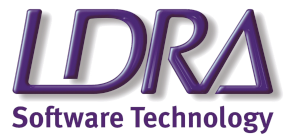Resources:



In the realm of embedded systems, especially those with real-time constraints, understanding the intricate behaviour of software and hardware is paramount. Debugging and optimizing these systems can be incredibly challenging due to their complexity, concurrency, and often limited observability. This is where tracing comes into play.
Tracing provides a crucial mechanism for capturing the dynamic behaviour of a system, allowing developers to:
- Identify and debug performance bottlenecks: Pinpoint areas where the system is not meeting its timing deadlines or consuming excessive resources.
- Analyse system behaviour: Understand the interactions between different software components and how they interact with the underlying hardware.
- Reproduce and diagnose issues: Capture detailed information about system state at the time of a failure, enabling easier debugging and root cause analysis.
- Verify system correctness: Ensure that the system behaves as expected under various conditions and meets its functional requirements.
HW vs. SW Tracing Solutions
Both hardware and software offer distinct approaches to tracing, each with its own advantages and limitations.
Hardware Tracing
How it Works
- Dedicated hardware components like trace units, embedded trace macros (ETMs), or logic analyzers capture low-level events directly from the processor core (e.g., instruction fetches, data accesses, branch predictions).
- These events are typically timestamped with high precision, providing a fine-grained view of the system's execution.
Advantages
- High performance: Minimal impact on system performance due to dedicated hardware.
- High precision: Provides accurate timing information for critical events.
- Fine-grained visibility: Captures low-level details about processor activity.
Disadvantages
- Cost: Can be expensive to implement, especially for high-end tracing solutions.
- Complexity: Requires specialized hardware and may involve complex configuration and data analysis.
- Limited flexibility: not as flexible as software tracing for capturing application-specific events as it is Processor specific, and it cannot be used by multiple team members at once.
Software Tracing
How it Works
- Software libraries or instrumentation tools are used to insert tracing statements into the application code.
- These statements capture events of interest (e.g., function calls, data values, system states) and log them to a buffer or a file.
- The tracing information can then be analysed using debugging tools or custom analysis scripts.
Advantages
- Flexibility: Can be easily adapted to capture application-specific events and data.
- Cost-effective: Generally, less expensive to implement compared to hardware tracing.
- Ease of use: Relatively easy to integrate into existing software.
Disadvantages
- Performance overhead: Can introduce significant performance overhead, especially for high-frequency tracing.
- Limited precision: May not provide the same level of timing accuracy as hardware tracing.
- Potential for interference: Tracing code can potentially interfere with the normal execution of the application.
Choosing the Right Tracing Solution
The choice between HW and SW tracing depends on several factors, including:
- Performance requirements: If high performance and minimal impact on system timing are critical, hardware tracing might be the better choice.
- Tracing granularity: If fine-grained details about processor activity are required, hardware tracing is often necessary, when selecting a SW tracing environment make sure to check what level of tracing is provided (statement, branch coverage or even MC/DC coverage).
- Application complexity: For complex applications with intricate interactions, a combination of HW and SW tracing may be most effective.
- Budget and development time: HW tracing can be more expensive and time-consuming to implement.
Conclusion
Tracing is an indispensable tool for developing and debugging real-time embedded systems. By understanding the strengths and weaknesses of HW and SW tracing solutions, developers can choose the most appropriate approach for their specific needs. In many cases, a hybrid approach that combines both HW and SW tracing can provide the best of both worlds, offering comprehensive insights into system behaviour while minimizing performance overhead.
Our Offering
Logic Technology Provides SW Based Trace Solutions dedicated to real time embedded product development targeting safety-critical industries requiring Certification activities. Additionally, we offer unique HW-based Trace integration options to speed Up Safety Certifications with Code Coverage based on TRACE32® and the LDRA tool suite®. Solutions we provide support most development platforms in various toolchain combinations like Eclipse ( ST and NXP ) , Visual Code as well as ARM , Keil , IAR, Segger and GNU based build solutions just to name a few.
Finally, we provide RTOS Based Trace solutions with advanced profiling features to identify performance bottlenecks and solve timing problems, which are otherwise very hard to find. Check into our support for popular embedded RTOS’s like freeRTOS, PX5, ThreadX, VxWorks, Zephyr, Linux and Bare Metal SW. Contact us, share your use-case and find out how to improve your product quality & assure bugs don’t make it into your final product.

André De Ceuninck
Software Quality | Testing | Certification
Want to know more about tracing options?
Let's have a talk and find out what would work best for your application and your development environment.